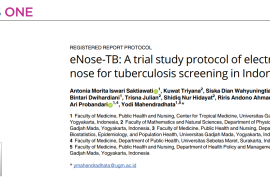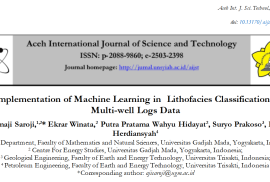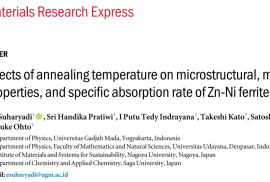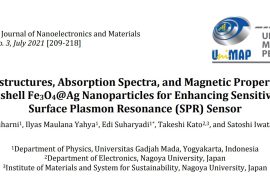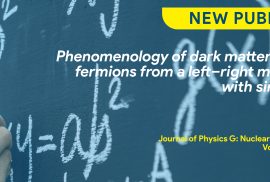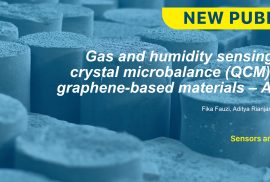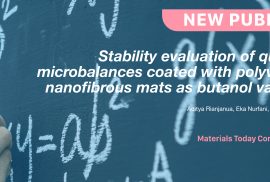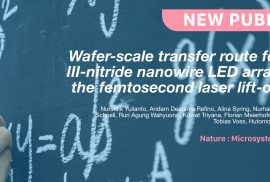Antonia Morita Iswari Saktiawati, Kuwat Triyana, Siska Dian Wahyuningtias, Bintari Dwihardiani, Trisna Julian, Shidiq Nur Hidayat, Riris Andono Ahmad, Ari Probandari, Yodi Mahendradhata
Publication
Sudarmaji Saroji, Ekrar Winata, Putra Pratama Wahyu Hidayat, Suryo Prakoso, Firman Herdiansyah
Edi Suharyadi, Sri Handika Pratiwi, I Putu Tedy Indrayana, Takeshi Kato, Satoshi Iwata, Keisuke Ohto
Juharni, Ilyas Maulana Yahya, Edi Suharyadi, Takeshi Kato, Satoshi Iwata
Idham Syah Alam
Journal : Journal of Physics G: Nuclear and Particle Physics
Volume 49 Number 2 025002
Abstract
We investigate a left–right mirror model with SU(3)c × SU(2)L × SU(2)R × U(1)Y and a discrete symmetry, which introduces mirror fields that are copies of the standard model (SM) fields. The mirror fields have the opposite chirality to their SM counterpart fields. We also introduce singlet scalars as dark matter (DM). The new interaction between DM, SM fermions, and mirror fermions can account for DM abundance, charged lepton flavor violation, lepton anomalous magnetic moment, and flavor changing neutral current. We demonstrated that if we choose DM annihilation into muon as the dominant annihilation channel for leptophilic DM, both the observed DM abundance and the observed discrepancy between theory and experiment in the muon anomalous magnetic moment can be explained without contradicting the bound derived from charged lepton flavor violating processes. We briefly discuss how mirror fermions will be produced at the future linear collider, as mirror fermions can interact with neutral gauge bosons in this model. Finally, we discuss the lightest mirror neutrino decay mechanism, which will be highly abundant if stable.
Fika Fauzi, Aditya Rianjanu, Iman Santoso, Kuwat Triyana
https://doi.org/10.1016/j.sna.2021.112837
Journal : Sensors and Actuators A: Physical
Volume 330, 15 October 2021, 112837
Abstract
Graphene and graphene-based materials have shown great potential for detecting gases and humidity due to their high specific surface areas. Quartz crystal microbalance (QCM) sensors have been massively developed because they have high sensitivity, consume low energy, and can be readily modified. Recently, QCM coated by graphene composites has been explored to sensitively and selectively detect various gases and humidity. Herein, we summarize the recent progress on QCM gas sensors and QCM humidity sensors based on graphene materials and graphene composites. We start from an introduction to the sensing principle of QCM, synthesis and preparation of graphene materials used for QCM sensing material, application of graphene materials and graphene composites for sensing materials of QCM gas sensors and humidity sensors, and the mechanism of those sensors. We mainly summarize the recent advances in the performances of QCM gas sensor and QCM humidity sensor coated with pristine graphene, graphene oxide, reduced graphene oxide, and various graphene-based composite materials, including chemical, polymer, metal oxide, and other carbon-based materials. The challenges for future works related to the development of QCM sensors coated by graphene materials or graphene composites are also elaborated.
Aditya Rianjanu, Eka Nurfani, Muhamad F. Arif, Kuwat Triyana, Hutomo Suryo Wasisto
https://doi.org/10.1016/j.mtcomm.2020.101770
Journal : Materials Today Communications
Abstract
Stability is one of the crucial sensor properties to be applicable in real condition and yet hardly investigated. In this communication, we evaluated the stability of butanol vapor sensors that were constructed using quartz crystal microbalance (QCM) platforms coated with electrospun polyvinyl acetate (PVAc) nanofibers. The reliability test was performed by monitoring the sensor frequency characteristics in a long-term measurement, in which the frequency shift was found to decrease by ∼7% after the sensors have been tested for 100 times. This performance degradation was mainly attributed to the reduction of active membrane surface area caused by swelling of the nanofibers, which was confirmed by scanning electron microscopy (SEM) images. This finding does not only allow us to better understand the nanofiber-coated QCM sensor limitation and degradation process, but also to design appropriate strategies for mitigating the device stability issues.
Nursidik Yulianto, Andam Deatama Refino, Alina Syring, Nurhalis Majid, Shinta Mariana, Patrick Schnell, Ruri Agung Wahyuono, Kuwat Triyana, Florian Meierhofer, Winfried Daum, Fatwa F. Abdi, Tobias Voss, Hutomo Suryo Wasisto & Andreas Waag
https://doi.org/10.1038/s41378-021-00257-y
Journal : Nature Microsystems & Nanoengineering
Abstract
The integration of gallium nitride (GaN) nanowire light-emitting diodes (nanoLEDs) on flexible substrates offers opportunities for applications beyond rigid solid-state lighting (e.g., for wearable optoelectronics and bendable inorganic displays). Here, we report on a fast physical transfer route based on femtosecond laser lift-off (fs-LLO) to realize wafer-scale top–down GaN nanoLED arrays on unconventional platforms. Combined with photolithography and hybrid etching processes, we successfully transferred GaN blue nanoLEDs from a full two-inch sapphire substrate onto a flexible copper (Cu) foil with a high nanowire density (~107 wires/cm2), transfer yield (~99.5%), and reproducibility. Various nanoanalytical measurements were conducted to evaluate the performance and limitations of the fs-LLO technique as well as to gain insights into physical material properties such as strain relaxation and assess the maturity of the transfer process. This work could enable the easy recycling of native growth substrates and inspire the development of large-scale hybrid GaN nanowire optoelectronic devices by solely employing standard epitaxial LED wafers (i.e., customized LED wafers with additional embedded sacrificial materials and a complicated growth process are not required).
Aditya Rianjanu, Rizky Aflaha, Nur Istiqomah Khamidy, Mitra Djamal, Kuwat Triyana and Hutomo Suryo Wasisto
https://doi.org/10.1039/D1MA00152C
Journal : MATERIALS ADVANCES
Abstract
Conventional chemoresistive gas sensors based on inorganic metal oxide semiconductors work typically at an elevated temperature (200 – 500°C) to facilitate the chemical reaction between the target gas molecules and sensing oxide layer. Besides their high operating temperature, these sensors are often found to possess poor selectivity towards a specific analyte. Here, we report on the fabrication and functionalization of electrospun citric acid-doped polyvinyl acetate (PVAc/CA) nanofibers on a quartz crystal microbalance (QCM) chip, which is used as a highly sensitive and selective gravimetric trimethylamine (TMA) gas sensor operating at room temperature. The structural morphology and chemical composition of both undoped and CA-doped PVAc nanofibers were investigated by the scanning electron microscopy (SEM) and the Fourier-transform infrared (FTIR) spectroscopy, respectively. During exposure to TMA vapors, the PVAc/CA nanofiber sensor could obtain a sensing sensitivity of 85.4 Hz/ppm with a limit of detection (LOD) of 19 ppb. Cross-sensitivity tests involving different analytes/gases (i.e., TMA, dimethylamine (DMA), methylamine (MA), ammonia, and water) revealed the high selectivity characteristic of the sensor towards TMA molecules. Besides, decent reversibility and repeatability of the sensor with response and recovery times of 7 and 20 s, respectively, were also demonstrated. Amongst the other recently reported QCM-based TMA gas sensors, the proposed device is superior in terms of sensitivity and LOD. This simple yet low-cost alternative improvement technique based on chemical modification of nanofibers can potentially be employed in food-freshness monitoring system, especially for fishery and seafood products where TMA is employed as their quality indicator (i.e., the primary marker of the fishy odor).
Antonia Morita Iswari Saktiawati, Kuwat Triyana, Siska Dian Wahyuningtias, Bintari Dwihardiani, Trisna Julian, Shidiq Nur Hidayat, Riris Andono Ahmad, Ari Probandari, Yodi Mahendradhata
https://doi.org/10.1371/journal.pone.0249689
Journal : PLOS One
Abstract
Even though conceptually, Tuberculosis (TB) is almost always curable, it is currently the world’s leading infectious killer. Patients with pulmonary TB are the source of transmission. Approximately 23% of the world’s population is believed to be latently infected with TB bacteria, and 5–15% of them will progress at any point in time to develop the disease. There was a global diagnostic gap of 2.9 million between notifications of new cases and the estimated number of incident cases, and Indonesia carries the third-highest of this gap. Therefore, screening TB among the community is of great importance to prevent further transmission and infection. The electronic nose for screening TB (eNose-TB) project is initiated in Yogyakarta, Indonesia, to screen TB by breath test with an electronic-nose that is easy-to-use, point-of-care, does not expose patients to radiation, and can be produced at low cost.

